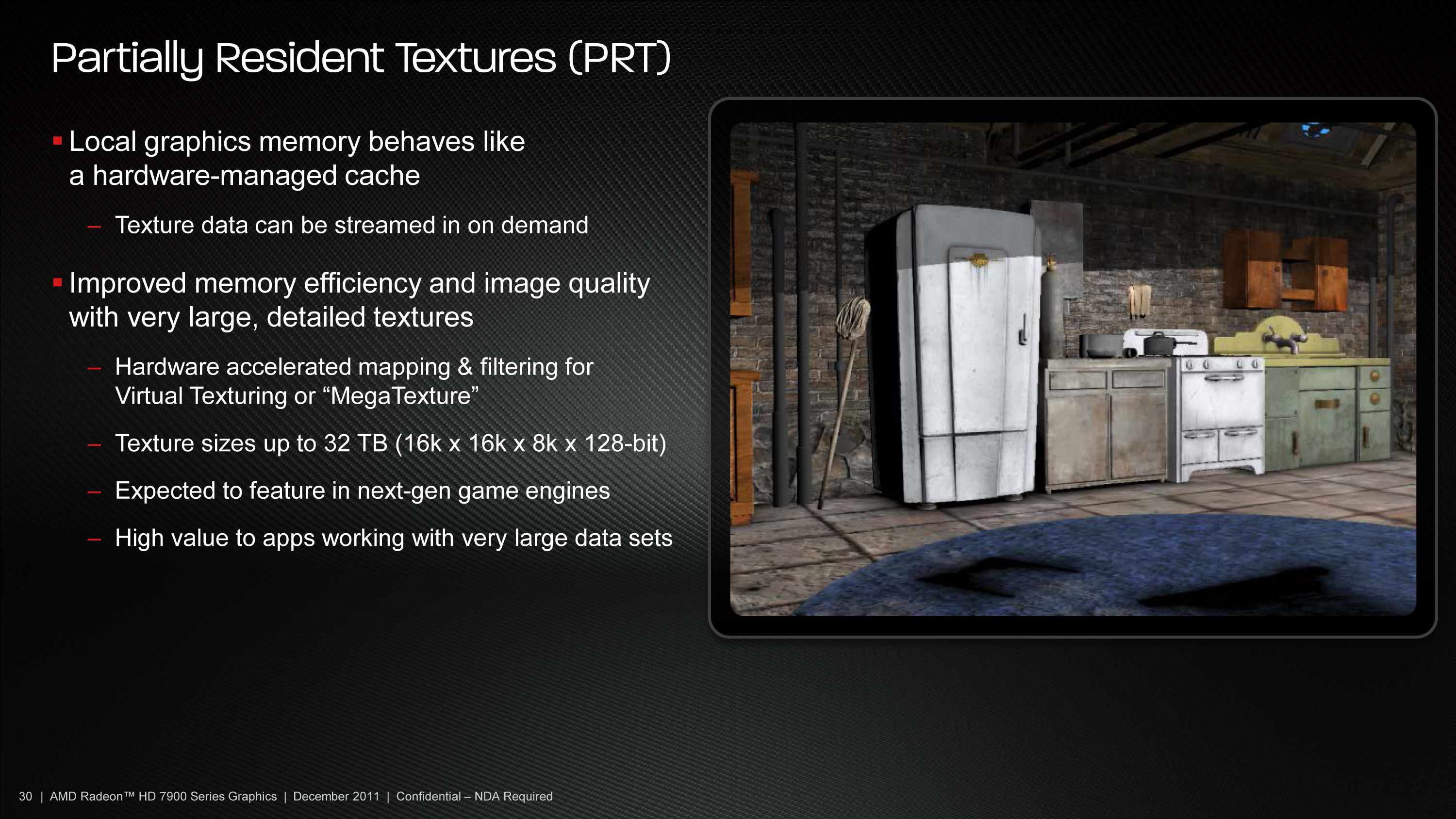Is Tahiti Short-lived?
The most interesting thing about this launch is that it appears that Tahiti’s HD 7970 may be short-lived. AMD’s 28nm yields are known to not be great and the specifications of the new GPU indicate that something strange is going on. The chip itself is quite complex with 4.3 billion transistors but its core only runs at a very conservative 925MHz. Most telling is that its performance is not that great except in DX11 games and especially in heavily tessellated scenarios – only about 25% faster than a GTX 580 overall.
Inside sources tell ABT that the HD 7970 is likely to be released much like GF 100 Fermi was. Originally, Nvidia released the hot-running and poor-yielding GTX 480 which was later reworked into the greatly improved GF110 GTX 580. It is pure speculation, however, that this new HD 7970 may ship with some parts disabled that may be enabled in a respin to meet the next generation of Fermi, the GTX 680 in Q1 of 2012.
At the very least, the HD 7970 is debuting very conservatively as a possibly new strategy from AMD’s new CEO. Timing is good as it shows up at the very end of the year so that AMD can now claim the fastest single-GPU crown, and it brings new life to their partners line-up in time for CES. Best of all, it gives AMD time to respin the chips into higher-performing video cards so as to meet the GTX 680.
We are also hearing that across the board, the stock HD 7970 is a bit disappointing as it only scores about 20-30% faster than the stock GTX 580 – well within reach of an overclocked GTX 580 and priced similarly at about $550. We are also hearing that in a few older DX9 games, it is not that much faster than than the previous generation’s HD 6970, and AMD’s emphasis will be on DX11 and heavily tessellated games.
It appears that the HD 7970′s extremely conservative 925MHz clockspeed comes with good overclocking headroom as a special grace. With the overclocked versions that AMD’s partners are free to produce, it may start to run away from the overclocked GTX 580.
 . Rekao bih da to najviše objašnjava grafove. Kako bilo, karta je brutalna i takva.
. Rekao bih da to najviše objašnjava grafove. Kako bilo, karta je brutalna i takva.







